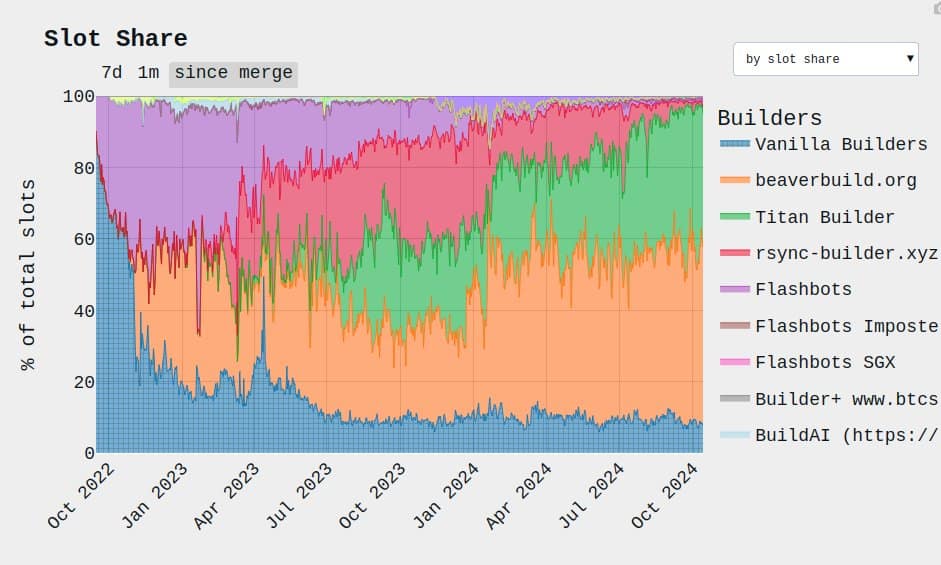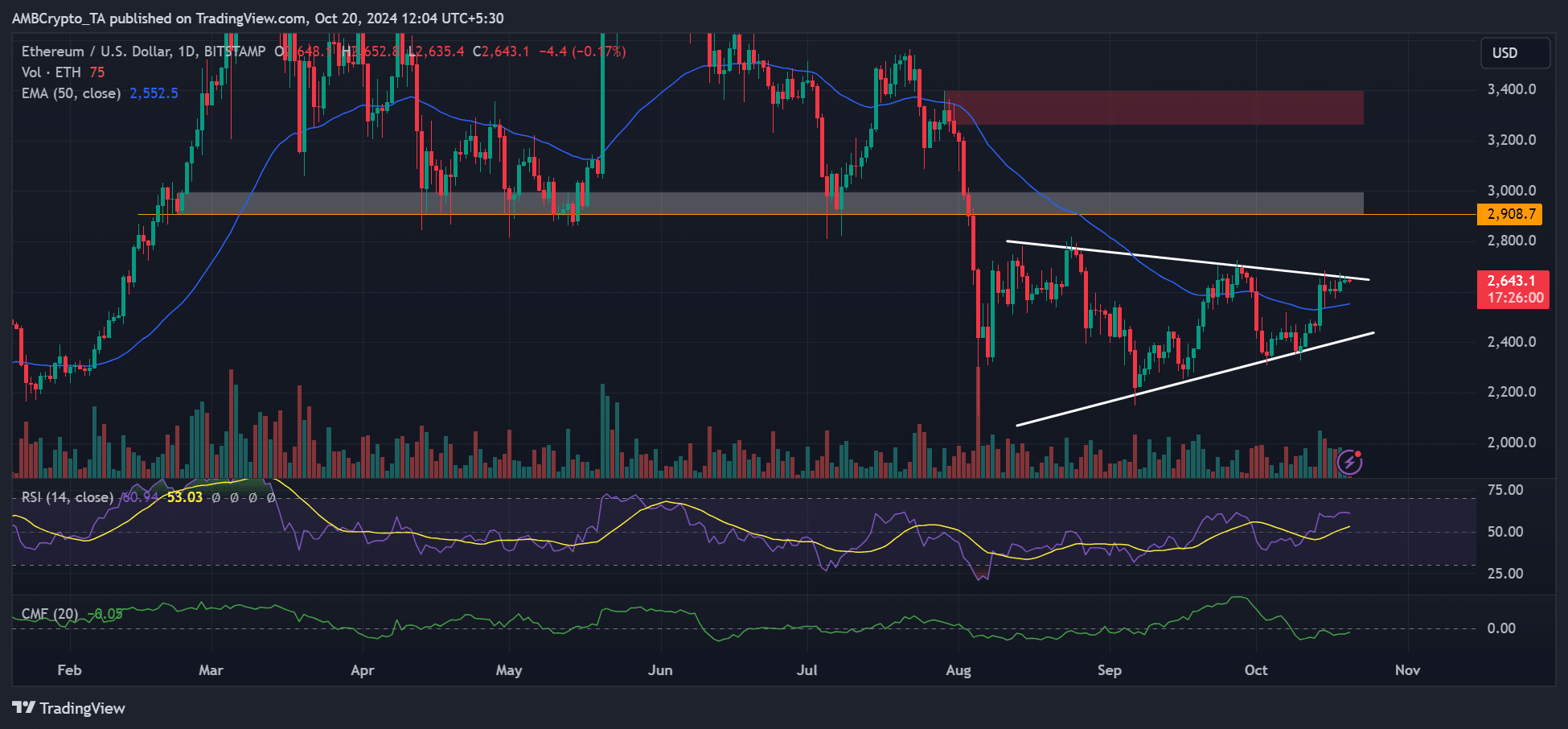vital buterin Why Ethereum centralization is a problem: 'High risk…'
- Vitalik Buterin identified block building and staking as key concentration risks.
- The team was exploring some solutions to address these risk factors.
Vitalik Buterin, its co-founder Ethereum [ETH]Centralization of the network explored the risks and possible solutions that the team was exploring.
Buterin identifies block building and staking as key centralization risks. To put the dire situation into perspective, two entities (the Beaver and the Titan) are almost made up 90% of ETH blocks In October
What could possibly go wrong with this level of centralization?

Source: Buterine
Buterin also highlighted that the dominance of large partners can increase the risk of network attacks and censorship. he stated,
“This (dominance of big stakers) leads to a high risk of 51% attacks, transaction censorship and other crises. In addition to centralization risk, there is also the risk of value extraction: a small group capturing value that would otherwise go to Ethereum's users.”
Possible solution
Since last year, the aforementioned risks have increased amid the increased use of specialized algorithms (MEV, Maximum Extraction Value) by block proposers to increase revenue.
“Larger actors can afford to run more sophisticated algorithms (“MEV mining”) to generate blocks, which pay them higher revenue per block.”
As for the block creation problem, Buterin cites the inclusion list approach as a possible solution, where proposers and creators share the work.
“The leading solution is to further break down the task of block production: we leave the proposer (ie a stacker) to choose the transactions, and the creator can just choose the order and insert some of their own transactions. That's what inclusion lists want to do.”
The team was exploring different nuances of inclusion lists with different trade-offs and had to settle on a single approach.
At risk, 34M of the 120M circulation supply is stocked, which is approx 30% of ETH in supply.
According to Buterin, ongoing staking growth could potentially make a liquid staking token (LST) more dominant and reduce liquidity.
To address this, the team explored reducing staking rewards and capping the amount of ETH that can be staked.
Overall, Buterin reiterated his intention to prevent price gouging from users at the expense of centralized control and limit the network from going down the road of centralization.
Hours after the update, sentiment in ETH rose positively, suggesting that market participants were optimistic about the altcoin's price potential.


Source: Sandhi
While it remains to be seen what solutions the team will come up with to address the issues raised, this move could strengthen the ETH value in the long run.
At press time, ETH was worth $2.6K, below a key roadblock from its $2.9k bullish target.


Source: ETH/USD, TradingView

